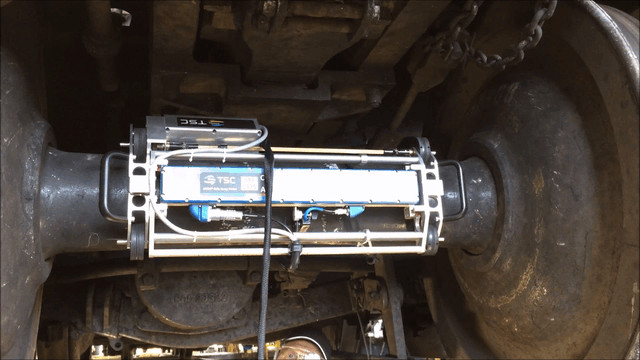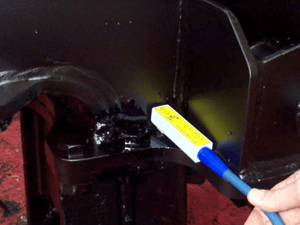While Alternating Current Field Measurement (ACFM®) — an electromagnetic inspection technique — was originally developed to dramatically improve the reliability of subsea inspections for the oil and gas sector, it was independently assessed as a viable method for use in the rail industry. Technologies employed are typically Ultrasonic Testing (UT) and Magnetic Particle Inspection (MPI) which present challenges when attempting to detect shallow surface-breaking defects. In order to carry out MPI effectively, the removal of paint is required, and UT hasn’t demonstrated the necessary sensitivity. However, the ACFM technique provides many advantages including the capacity to inspect through coatings and grease, making it the ideal candidate for many specific rail applications.
ACFM was first introduced to the rail industry for the inspection of axles, and the TSC Axis™ is the result of a rail operations company looking for a more efficient solution. The company had nearly 10,000 heavy haul axles on wagons, many operating beyond their intended design life, and were experiencing axle failures and subsequent derailments.
Non-Destructive Testing (NDT) isn’t typically performed on the axles in depots as they don’t usually have trained inspection technicians. Enter the Axis, a semi-automated crawler-based system readily deployable by train technicians with no prior inspection experience. The motorized system comprises of a long array probe that covers the center 11.8 inches (300mm) of the axle (the area of highest stress) and rotates circumferentially, automatically interpreting ACFM data and defect detection, and providing a simple pass/fail result. Compared to MPI, ACFM provides major time and cost savings and further assists corrosion integrity by not disturbing the original coating on painted axles. The Axis has proven to be an effective screening tool with axle inspection performed in only two minutes, offering a digital record for comparative analysis.

Bogie inspections typically performed by MPI can also be replaced by ACFM. Gone are the days of cleaning bogies to bright metal pre-inspection and reapplying paint post-inspection. Weld examination is easily performed by a variety of angled or lengthened probes depending on accessibility, with array probes available to expedite the bogie weld inspection process. Wheel rims and flanges can also be inspected using a standard pencil ACFM probe or array probes.

A fast trolley rail inspection system called the TrackSys also takes advantage of ACFM for surface crack detection. A collaborative project, partially funded by the UK government, integrated ACFM along with B-Scan UT and Linescan cameras into one solution. Pulled by a semi-autonomous electric cart, the system inspects at speeds up to an impressive 12.4 miles (20km) per hour.

The powerful data acquisition system behind our ACFM technology is the TSC Amigo 2, a self-contained unit incorporating electronics, multi-touch display and storage in a rugged enclosure. Amigo 2 is engineered around an advanced signal acquisition and processing system that offers smoother, higher resolution indications that increase the detectability of small defects.

The benefits of Alternating Current Field Measurement instruments offered by Eddyfi Technologies has increasingly been recognized by the rail industry, with a plethora of accreditation and approvals to support its position as the superior inspection technique. Contact us to learn more about our advanced ACFM solutions for your rail inspection challenges today.





